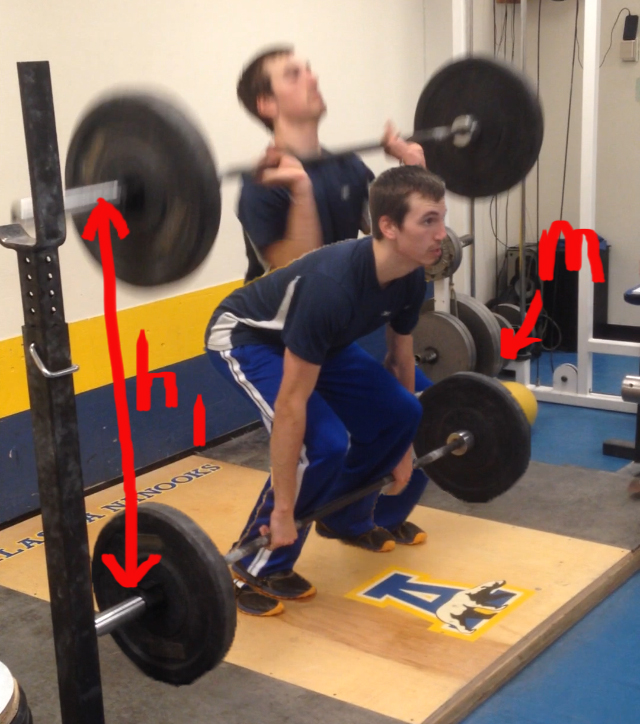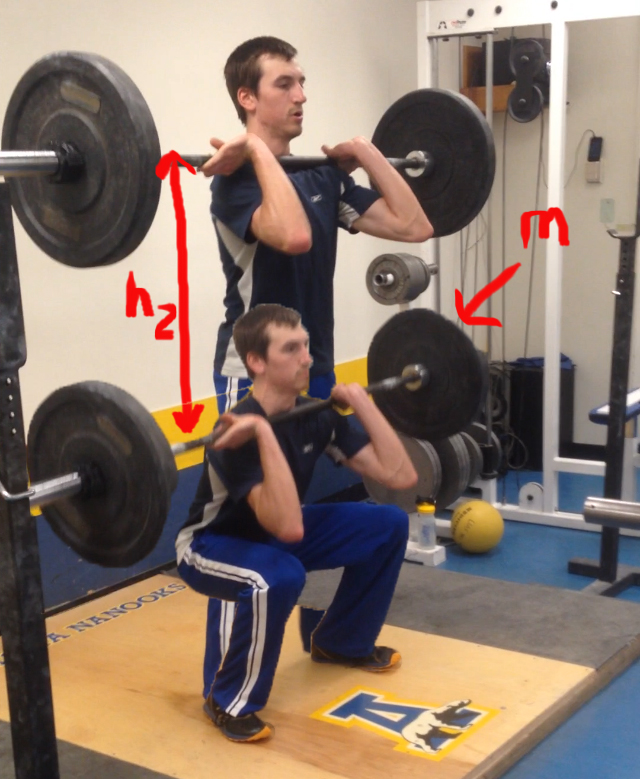Power
Home
Page
The Power Clean
The Physics
Power
Center of Mass
Levers
Bibliography
Power is an important part of
weight lifting and is what most lifters
are concerned with. Lifters are
interested in increasing their power
output. To measure power you need to
measure the amount of force applied to
the bar and how far the bar travels to
determine work and then measure the time
it takes to accomplish the work.
This equation looks like this Power =
Work/Time or more simply P = W/t
Now breaking power up into more basic
measurable variables we find that power
is P = (mass * acceleration *
distance)/(time)
The mass is measured in kilograms and is
what is lifted by the lifter. The
acceleration is 9.81m/s^2 which is due
to gravity. And the distance is the
change in elevation from the ground to
the lifters final position. Time is
measured in seconds and is the duration
of the whole process.
Our calculation will be in two parts:
the first pull which puts the bar on
your shoulders and the second pull which
puts the bar at its final height.
FIRST PULL

SECOND PULL

So we will set h_1 equal to 1 meter and
h_2 to .75 meters and say that the mass
is 50 kilograms. We can estimate the
work done by using Potential Energy. PE
= mgh.
For the First Pull this is 50*9.81*1 =
490.5 joules. Then to determine the
Power used we must divide the work by
the amount of time it takes to move the
weight to the first position. This
normally takes about .5 seconds. So
during the first pull the lifter is
producing 490.5joules/..5sec = 981 watts
of power.
For the second pull the time is normally
about .75 seconds and just doing
the calculations P =
((50kg)*(9.81m/s^2)*(.75m))/(.75sec)
which equals about 490.5 watts.
The total power produced during the
power clean is then 1471.5 watts.
Do that at 3 sets of 8 reps and you'll
be building muscle like a pro.

